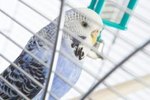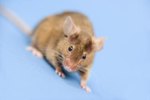
Lovebirds are fascinating and beautiful feathered friends -- and they need housing that is just as fun and vibrant as their personalities. Your aviary needs to be safe and clean, and fulfill your birds' curious nature so that they remain happy and healthy in your home.
Size
For one lovebird, your aviary must be at least 30 by 30 by 18 inches. For a pair, look for cages that are labeled for cockatiels. This size of birdcage will generally comfortably house two lovebirds. No cage is too large, so select the biggest aviary you can afford and have room for in your home. The bars of the cage should be horizontal, so that the lovebirds can easily climb on them. Be sure the cage bars are no less than three-fourths of an inch apart so the birds cannot escape.
Wooden or Bamboo Aviaries
Many aviaries made of wood or bamboo are very beautiful and natural. These cages are often nontoxic to birds if they are not stained or painted. The drawbacks of these enclosures is that lovebirds have a tendency to gnaw at the bars, which can enable them to escape. Wood and bamboo can also be difficult to clean, since urine and feces can penetrate the material, leaving stains and odor.
Metal Aviaries

Metal aviaries are generally the best choice for lovebirds, but you should take some precautions when choosing a metal cage. Most importantly, avoid cages that are painted or coated in any way. Lovebirds, busy as they are, will pick at the bars and may ingest toxic material. Choose an unpainted aviary cage, preferably made of uncoated steel or wrought iron. Keep the cage clean and dry to prevent rusting.
Other Considerations
Lovebirds tend to be quite busy and are often destructive. Make sure the toys you provide are sturdy and nontoxic, avoiding painted material and plastic. Remove any accessories that have been damaged before your lovebirds have a chance to ingest any hazardous material. Monitor their times outside the cage as well, as lovebirds will frequently seek out mischief.
References
Photo Credits
-
Jupiterimages/Photos.com/Getty Images
Writer Bio
Olivia Kight is an experienced online and print writer and editor. She graduated with a Bachelor of Arts in 2012, and has worked on education, family life and counseling publications. She also gained valuable knowledge shadowing a zoo veterinarian and grooming and socialize show dogs, and now spends her time writing and training her spunky young labradoodle, Booker.



